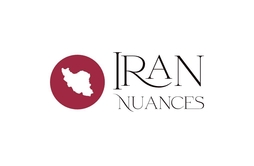In the wake of recent military developments in Karabakh, Armen Grigoryan, the Secretary of Armenia’s Security Council, embarked on a journey to Iran. This visit, occurring merely a week after the aforementioned developments, aimed to facilitate discussions on bilateral and regional matters with Iranian officials. Observers posit that the evolving dynamics in the Caucasus could potentially foster a novel trajectory in the political, security, and economic relations between Tehran and Yerevan.
The enhancement of Iran-Armenia relations hinges on several factors, with regional and geopolitical interdependence being paramount. Armenia, one of Iran’s 15 neighboring countries situated in its northwest, finds its neighborly ties with Iran potentially overshadowed by the ethnocentric plans of Turkey and the Republic of Azerbaijan in the region.
Beyond the aspect of geographical proximity, Armenia’s location in the geopolitically and geoeconomically significant South Caucasus region cannot be overlooked. Characterized by its abundant oil and gas resources, strategic transit situation, and its bridging position between Europe, the Middle East, and Central Asia, the South Caucasus region draws the attention of regional and extra-regional powers. These entities seek to establish their presence, secure military contracts, and form security structures in the region. Concurrently, the region’s political climate, fraught with intractable ethnic conflicts, paves the way for destructive maneuvers by extra-regional actors exploiting the existing rifts among regional countries.
From this perspective, the South Caucasus emerges as a peripheral security priority for Iran. A myriad of traditional and modern security threats emanate from this region, including ethnocentrism, border disputes, extreme nationalism, separatism, terrorism, and political and economic crises of countries, which in turn, foster an inclination toward foreign powers. These factors, while engendering regional instability, can potentially extend security risks within Iran’s borders.
Iran shares both land and water borders with the South Caucasus, specifically through the Republic of Azerbaijan and Armenia. These borders, consistently being a source of contention, have posed numerous security risks for Iran. However, politically, Yerevan has consistently been regarded as one of Tehran’s allies in the South Caucasus.
Yet, some observers note that the stagnation in Tehran-Yerevan relations over previous decades has rendered this relationship vulnerable. The failure to fortify bilateral relations between Iran and Armenia can be attributed in part to the mutual doubts regarding the actual potential of this relationship. These uncertainties are shaped by various factors, not solely external ones. However, Armenia’s foreign policy stances in recent years have significantly influenced Tehran-Yerevan relations.
The Iran-Armenia-Russia triad has traditionally been perceived as a robust triangle in the South Caucasus. However, the balance Tehran and Moscow strive to maintain in their relations with Yerevan and Baku, coupled with Yerevan’s pro-Western positions, have served to weaken this triangle.
Armenia’s foreign policy, characterized by its efforts to forge closer ties with the West, particularly the US and Israel, and its participation in NATO military programs and maneuvers, reflects its internal aspiration to engage differently with the West. This approach has sparked concerns in Tehran about the future of their relations. Simultaneously, the West is striving to hinder the further consolidation of Tehran and Yerevan’s relationship, recognizing their potential to become strategic partners. However, the West’s ability to provide the necessary security guarantees for Yerevan is limited due to geographical distance and Russia’s significant influence in the South Caucasus. Nevertheless, the shared border between Iran and Armenia necessitates an inextricable security link that must be maintained through bilateral or multilateral cooperation.
Beyond the political and security dimensions, the Iran-Armenia relationship also holds geo-economic potential. Armenia serves as a conduit for Iran to connect with Europe via Georgia and the Black Sea, while Iran provides Armenia with access to the warm waters of the Persian Gulf and the Indian Ocean, thereby alleviating the geopolitical bottleneck caused by its closed borders with the Republic of Azerbaijan and Turkey.
Furthermore, Armenia, being the only member of the Eurasian Economic Union (EEU) that shares a land border with Iran, could potentially serve as a communication bridge between Iran and the union. However, despite the conclusion of a free trade agreement between Iran and the EEU, the volume of Iran’s economic relations with both the union and Armenia has not seen significant growth. The implementation of initiatives aimed at activating this agreement has been stalled due to political and security factors.
The Baku factor is another crucial political element aligning the trajectory of Tehran and Yerevan’s bilateral relationship, causing divergence in some ways as well. Over the past decades, Iran and Armenia have established the foundation of their bilateral and regional relations primarily to manage fundamental geopolitical threats and ensure security, using a blend of defensive and balanced behavioral patterns. Consequently, the Iran-Armenia relationship is more reliant on peripheral and external factors rather than the essence and requirements of a bilateral relationship. Concentration on periphery and secondary preference in the Iran-Armenia relationship have posed numerous challenges for both countries and have hindered the realization of the true potential of their relations.
While the ethnocentric policies of Turkey and the Republic of Azerbaijan, which pose a threat to the territorial integrity of Iran and Armenia, cannot be overlooked, the Iran-Yerevan relationship can be further solidified from a political-security standpoint through economic investment.
To counter existing competing plans, such as the Zangezur Corridor, which depletes the geo-economic capacity of Iran and Armenia, the introduction of new bilateral or multilateral geo-economic initiatives could both safeguard this capacity and enhance the geo-economic standing of both countries. Armenia, with the involvement of Georgia, Russia, and India, could become part of the International North–South Transport Corridor (INSTC). Consequently, Iran’s borders with Armenia would be more secure, and the Iran-Armenia route could emerge as one of the region’s commercial corridors. The free trade agreement with the EEU would also be bolstered based on this secure situation.






